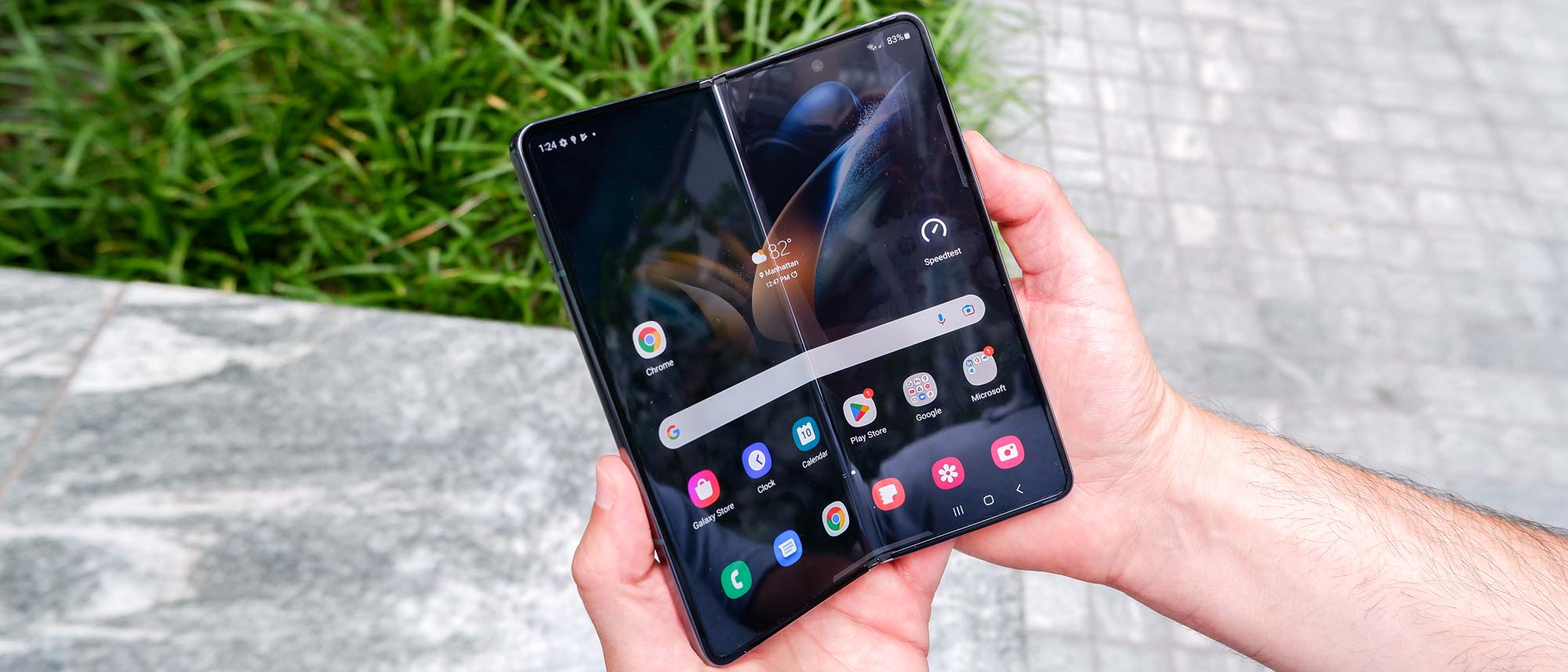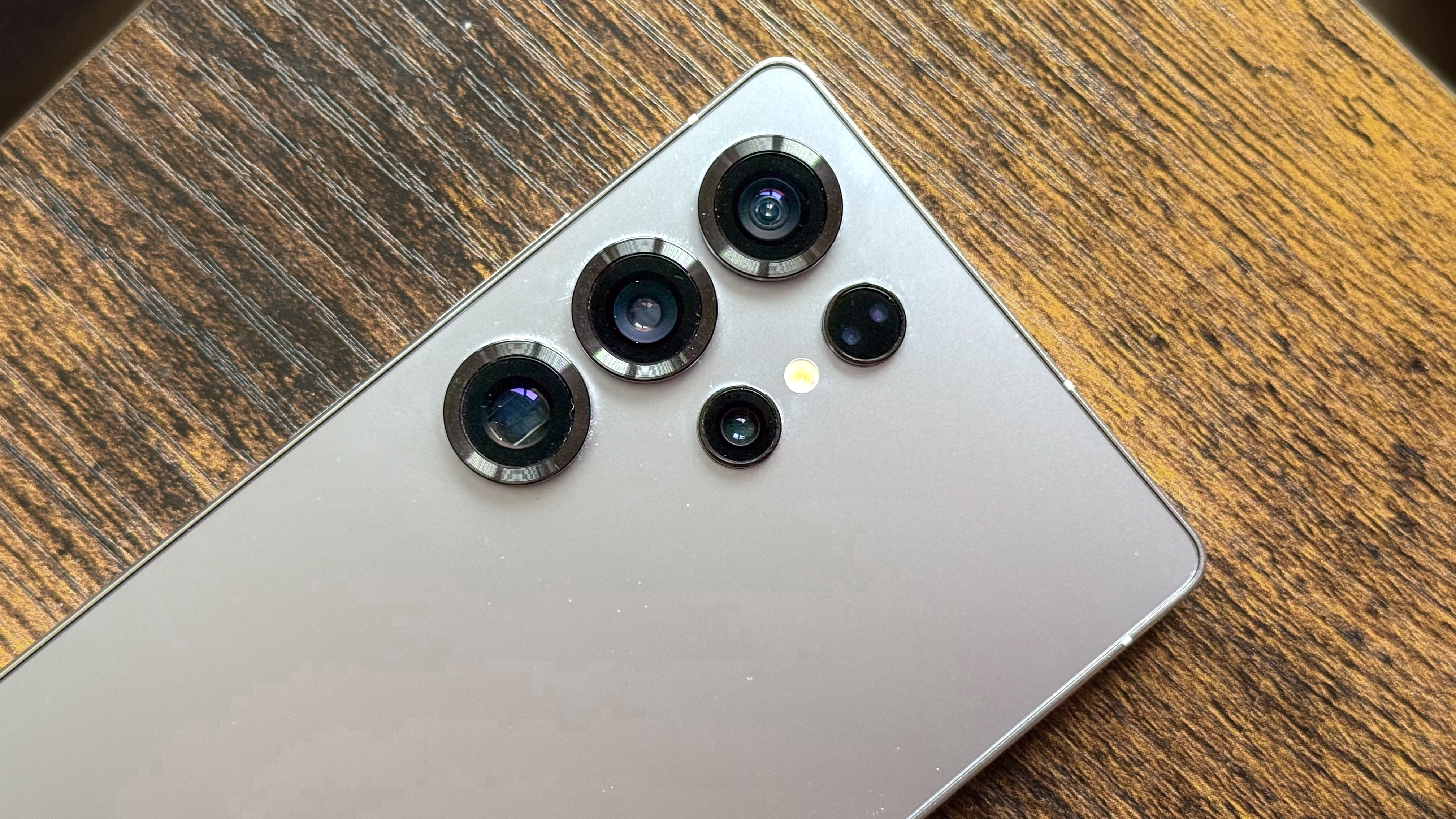Tom's Guide Verdict
The Galaxy Z Fold 4 makes multitasking easier with a new taskbar and new version of Android 12L. Samsung also delivers better cameras, a wider front display and a brighter main screen in a sleeker package. However, the price remains very high and this is still a bulky device.
Pros
- +
New taskbar improves multitasking
- +
Wider front screen
- +
Brighter main display
- +
Upgraded 50MP camera
- +
Longer battery life
Cons
- -
Still very pricey
- -
Thick and heavy
- -
Under-display camera just 4MP
- -
Crease still visible
Why you can trust Tom's Guide
There’s something about the Samsung Galaxy Z Fold 4 that makes me feel more powerful and productive when I’m using it. Maybe it’s the new taskbar that makes multitasking a breeze or the ability to run apps side by side and drag and drop content between windows.
I also appreciate the huge 7.6-inch main display, which is now brighter with slimmer bezels — and there’s more apps optimized for the Z Fold 4's large canvas. Plus, the 6.2-inch cover display is wider and easier to use. Other improvements include a 50MP main camera that rivals the Galaxy S22 series — and holds its own in our Galaxy Z Fold 4 vs iPhone 13 Pro Max face-off.
But while the hinge is thinner and the device a bit lighter, this is still a very thick and heavy phone, which makes me feel a bit less powerful after a while.
And then there’s the price. At $1,799, the Galaxy Z Fold 4 remains the most expensive flagship phone by far. So this best foldable phone really is best for those who are willing to pay a hefty premium for a phone and tablet in one.
Yes, there's likely a Galaxy Z Fold 5 on the way this summer with a faster chip and other upgrades. But if you're thinking about a foldable now see all the pros and cons in my Samsung Galaxy Z Fold 4 review.
Samsung Galaxy Z Fold 4 review: Cheat sheet

- The Galaxy Z Fold 4 looks and feels better, but it's still heavy: As someone who complained about the Z Fold 3's narrow cover display, I appreciate the wider front panel on the Fold 4. I also like the slimmer bezels on the main screen.
- Dragging and dropping makes life easier: It's pretty awesome that I can use a split screen setup and drag pics from the camera roll directly into Google drive. You can't do that on an iPhone.
- The crease is still quite visible: You don't notice the crease on the Z Fold 4 all the time, but it becomes an eyesore when you're using an app like Google Maps, especially in direct sunlight.
- The cameras take excellent photos: The Galaxy Z Fold 4 holds its own against the best camera phones. Portraits and flower shots are particularly compelling, though the Z Fold 4 fell a bit behind Apple in some cases. See the comparisons below.
- Good performance and benchmark results: The Snapdragon 8 Plus Gen 1 chip delivered strong benchmark results on Geekbench, 3DMark and our own video editing test. It's generally faster than the Galaxy S22 Ultra but behind the iPhone 14.
Samsung Galaxy Z Fold 4 specs
| Row 0 - Cell 0 | Row 0 - Cell 1 |
| Price | $1,799 |
| Inner display | 7.6 inches AMOLED (120Hz, 2176 x 1812) |
| Outer display | 6.2 inches AMOLED (120Hz, 2316 x 904) |
| CPU | Snapdragon 8 Plus Gen 1 |
| RAM | 12GB |
| Storage | 256GB, 512GB, 1TB |
| Wide camera | 50MP (f/1.8, Pixel size: 1.0μm, FOV: 85 ̊) |
| Ultra-wide camera | 12MP (f/2.2, Pixel size: 1.12μm, FOV: 123 ̊) |
| Telephoto camera | 10MP (f/2.4, Pixel size: 1.0μm, 3x optical zoom, 30x Space Zoom |
| Cover camera | 10MP (f/2.2, Pixel size: 1.22μm, FOV: 85 ̊) |
| Under-display camera | 4MP (f/1.8, Pixel size: 2.0μm, FOV: 80 ̊) |
| Battery | 4,400 mAh |
| Charging | 25W (0 to 50% in 30 mins) |
| Size closed | 6.1 x 2.6 x 0.55-0.62 inches |
| Size open | 6.1 x 5.1 x 0.21 inches |
| Weight | 9.28 ounces |
| Colors | Graygreen, Phantom Black, Beige, Burgundy (Samsung.com only) |
Samsung Galaxy Z Fold 4 review: Price and release date
The Samsung Galaxy Z Fold 4 is now available in stores, with a price that starts at a very high $1,799 for 256GB of storage, but you can also upgrade to 512GB or 1TB. The 512GB model costs $1,919 and 1TB goes for a whopping $2,159.
You'll find the Galaxy Z Fold 4 at major retailers as well as from all three big wireless carriers in the U.S. Though the phone is now on sale, many of the best Galaxy Z Fold 4 pre-order deals remain in place as of this writing. For example, you can save up to $1,000 with trade-in from Samsung and up to $1,000 from AT&T. You can also get up to $800 off from Verizon and $1,000 off from T-Mobile with a new line. Check our Samsung promo codes page to see the latest discounts available.
Samsung Galaxy Z Fold 4 review: Design and colors
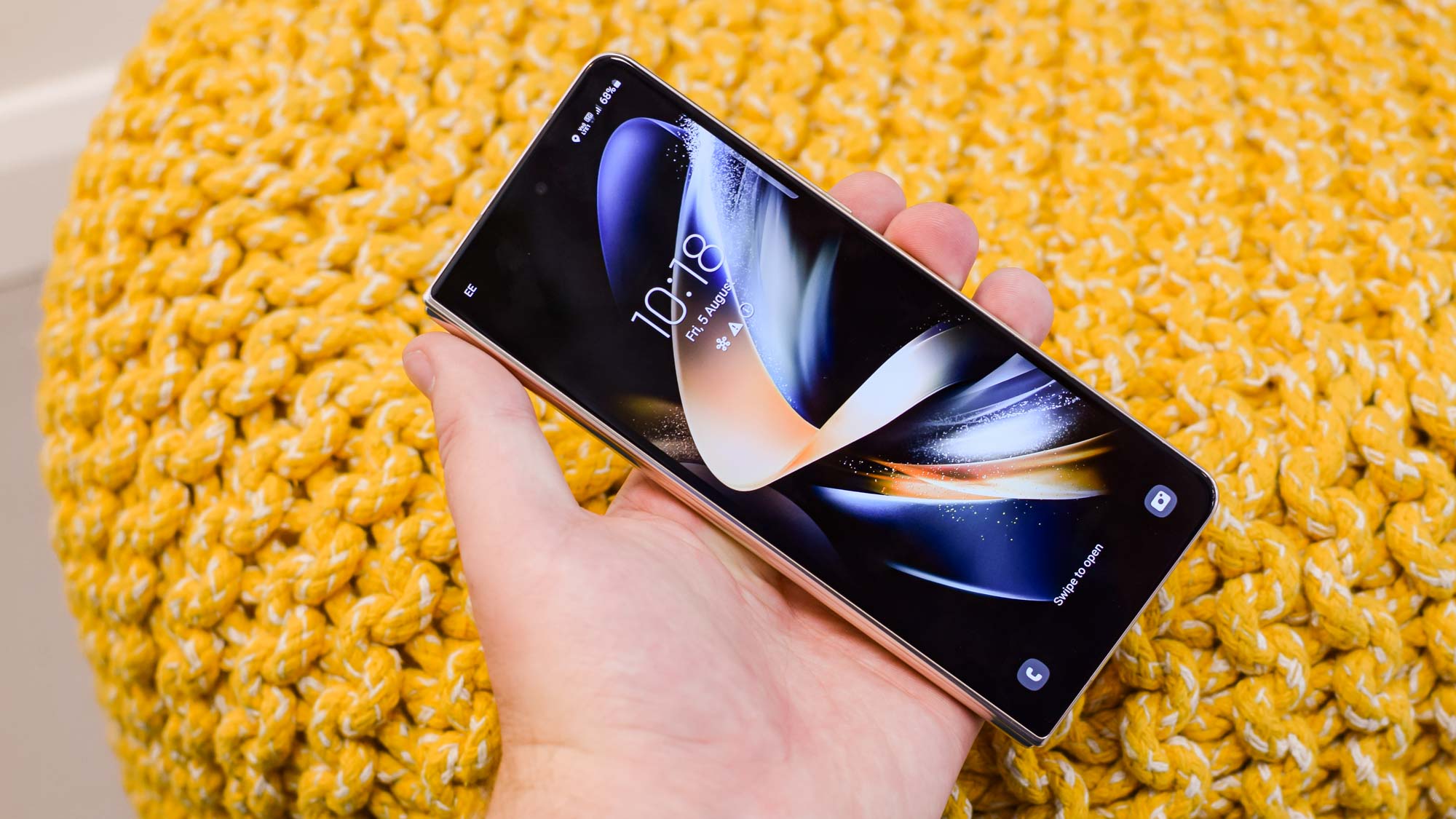
The first thing I noticed about the Galaxy Z Fold 4 is that the front display doesn't seem as squished. And that's because it has a wider aspect ratio than the Galaxy Z Fold 3. That makes the 6.2-inch panel easier to use with one hand and frankly will make you feel more comfortable using the cover screen for things like checking notifications and quickly responding to messages.
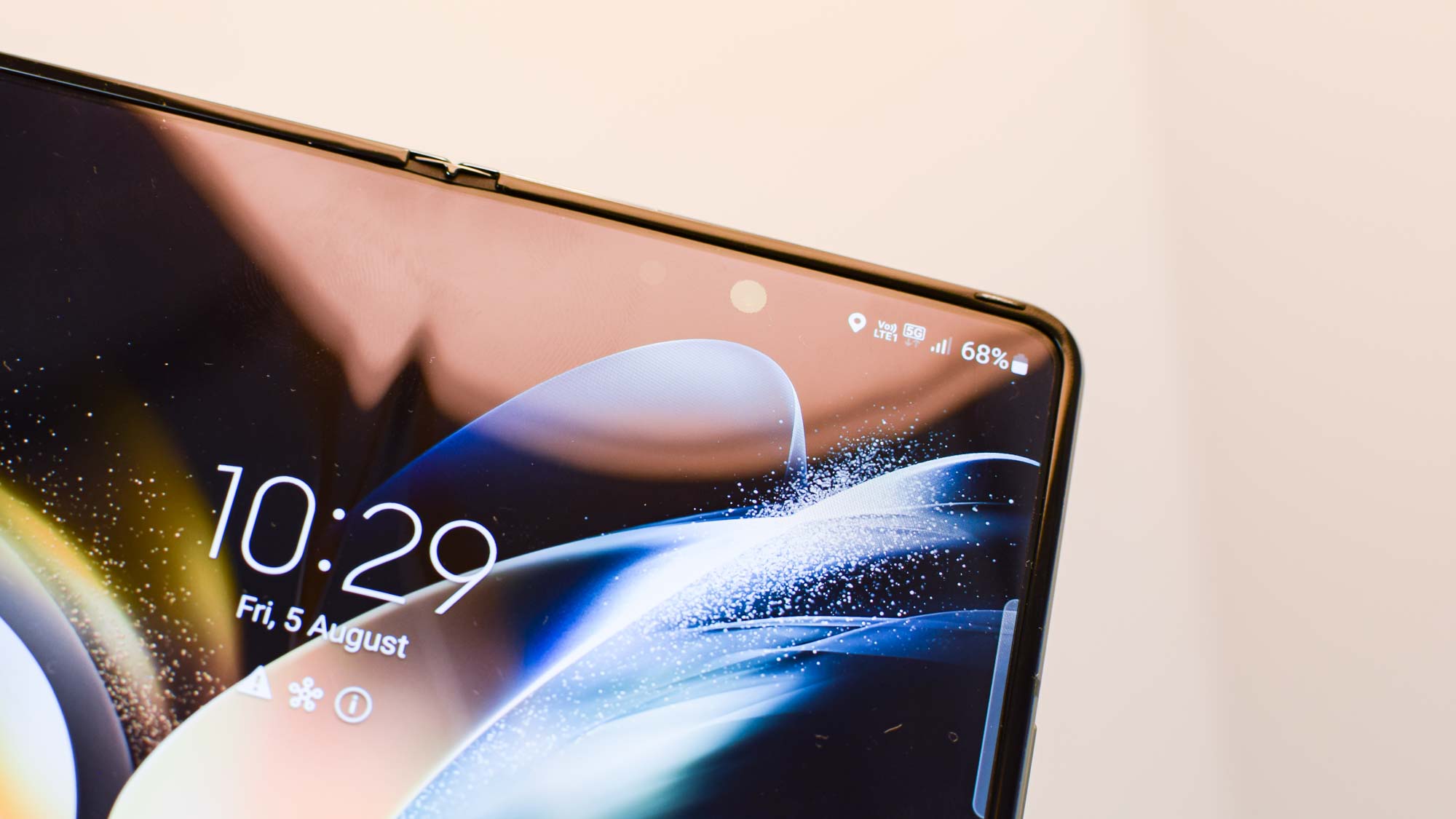
The Galaxy Z Fold 4 is less bulky and heavy this time around, though not by much. This is partly because Samsung has made the hinge slimmer.
The Z Fold 4 measures 6.1 x 2.6 x 0.55-0.62 inches closed and 6.1 x 5.1 x 0.21 inches open, compared to 6.2 x 2.6 x 0.56 to 0.62 inches (closed), 6.2 x 5 x 0.25 inches (open) for the Z Fold 3. So the new Fold is a bit shorter and thinner.
The new Fold 4 weighs 9.28 ounces versus 9.55 ounces for the Fold 3, which is not huge but I'll take it.
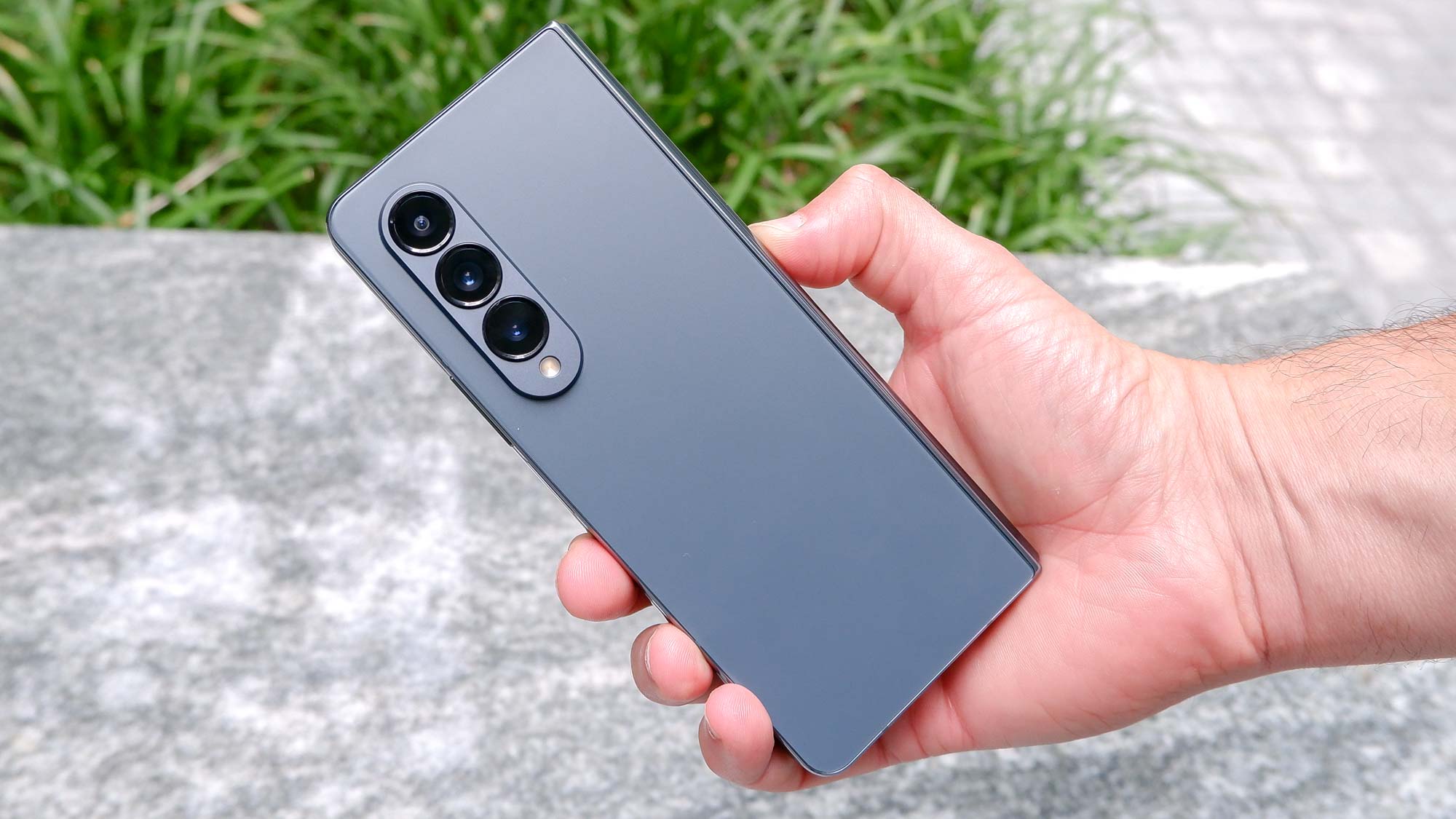
Unfortunately, I still noticed the heft of the Z Fold 4 in my pocket and when using the phone for more than a few minutes in bed. This handset is still about twice as thick as a regular smartphone when closed.
One plus is that the bezels on both the cover and main display have been trimmed down, which makes for a more immersive viewing experience. Also, I like that the under-display camera (UDC) is a bit less visible, so it blends in better with the surrounding content.
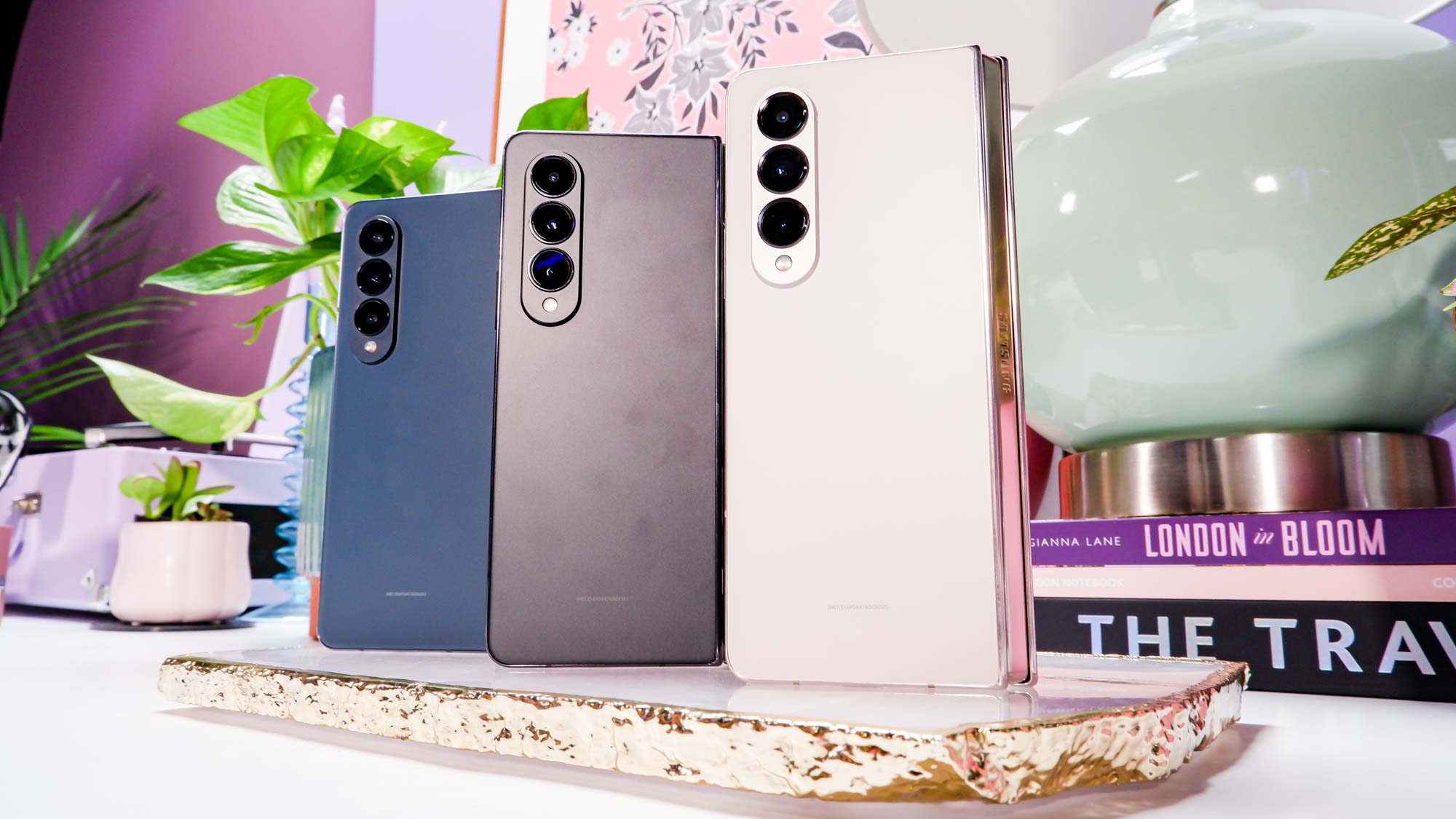
In terms of durability, Samsung says that the main screen is 45% stronger now. However, early testing shows that this claim may be unfounded, though the Z Fold 4 still appears to be fairly durable.
The Galaxy Z Fold 4 color options include Graygreen, Beige and Phantom Black. But you'll be able to get a special Burgundy color through Samsung.com.
Samsung Galaxy Z Fold 4 review: Displays
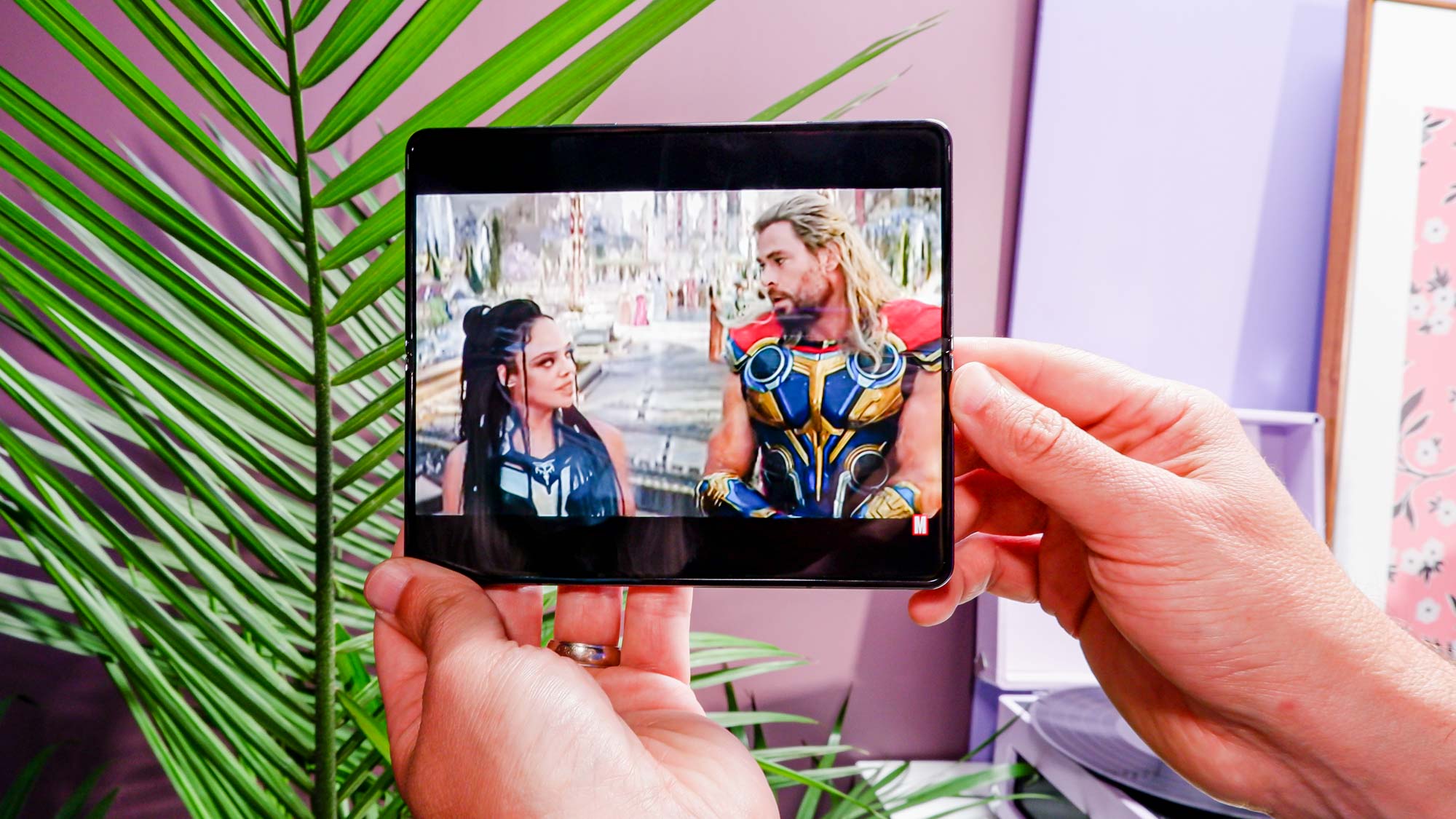
The main display on the Galaxy Z Fold 4 remains a beast at 7.6 inches, but Samsung has boosted the brightness while maintaining the 120Hz adaptive refresh rate.
This OLED panel looked vibrant when watching a trailer for Thor: Love and Thunder. Thor's blue and gold armor popped off the screen, and the picture was nice and crisp.
When watching Night Shift on Netflix with the Z Fold 4, I appreciated that I could have the move fill the whole screen despite the phone's odd aspect ratio. But doing so cuts off details to the left and right of the action.
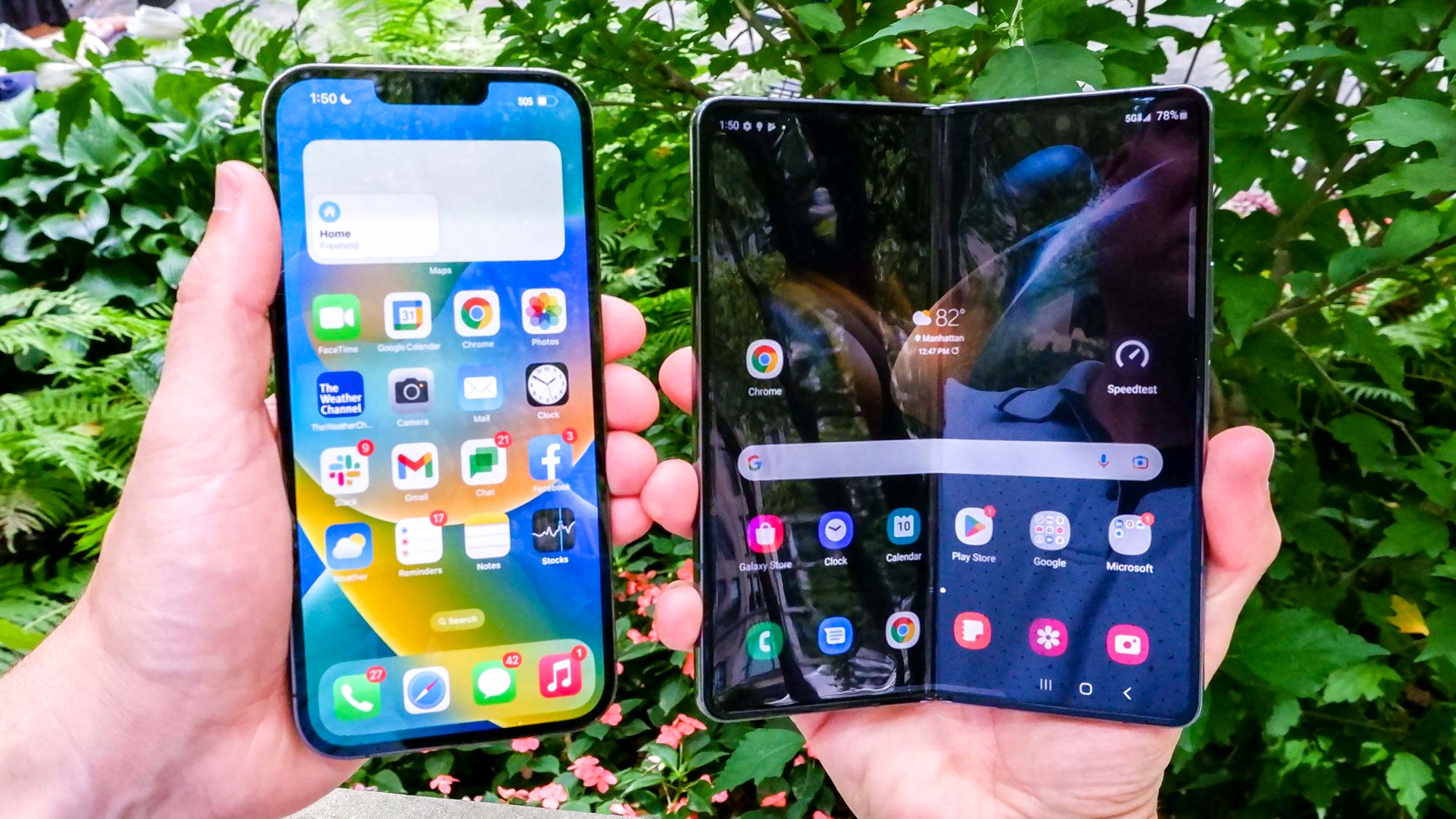
And I'm sorry to report that the crease still very much visible on the Galaxy Z Fold 4. It's not enough to ruin the fun if you're in the middle of a show or movie, but it can definitely be distracting.
On our lab tests, the Galaxy Z Fold 4 delivered impressive numbers across the board, especially brightness. The main panel registered a max of 905 nits, which is considerably more than the Galaxy Z Fold 3 (733). The Galaxy S22 Ultra (1,359 nits) and iPhone 13 Pro Max (1,038) are both brighter, but this is still a great improvement.
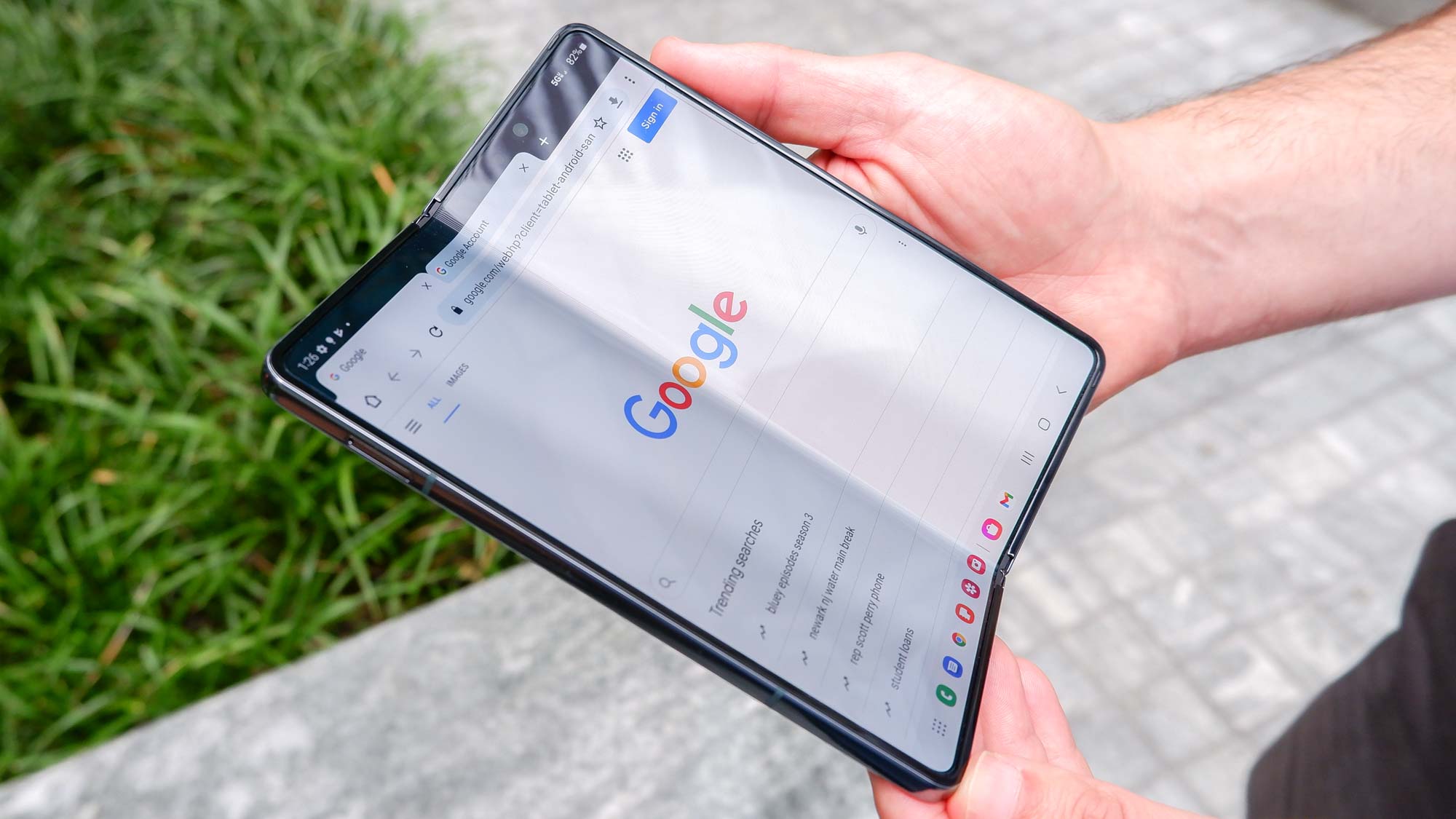
The 6.2-inch cover display also features a smooth 120Hz refresh rate (scaling down to 48Hz) but it's now 3mm wider, which means you don't have to feel as claustrophobic using this device with the screen closed. I had no problem typing on the front panel, which when you think about it could save you battery life if you don't use the larger screen as much.
Samsung Galaxy Z Fold 4 review: Software and Android 12L
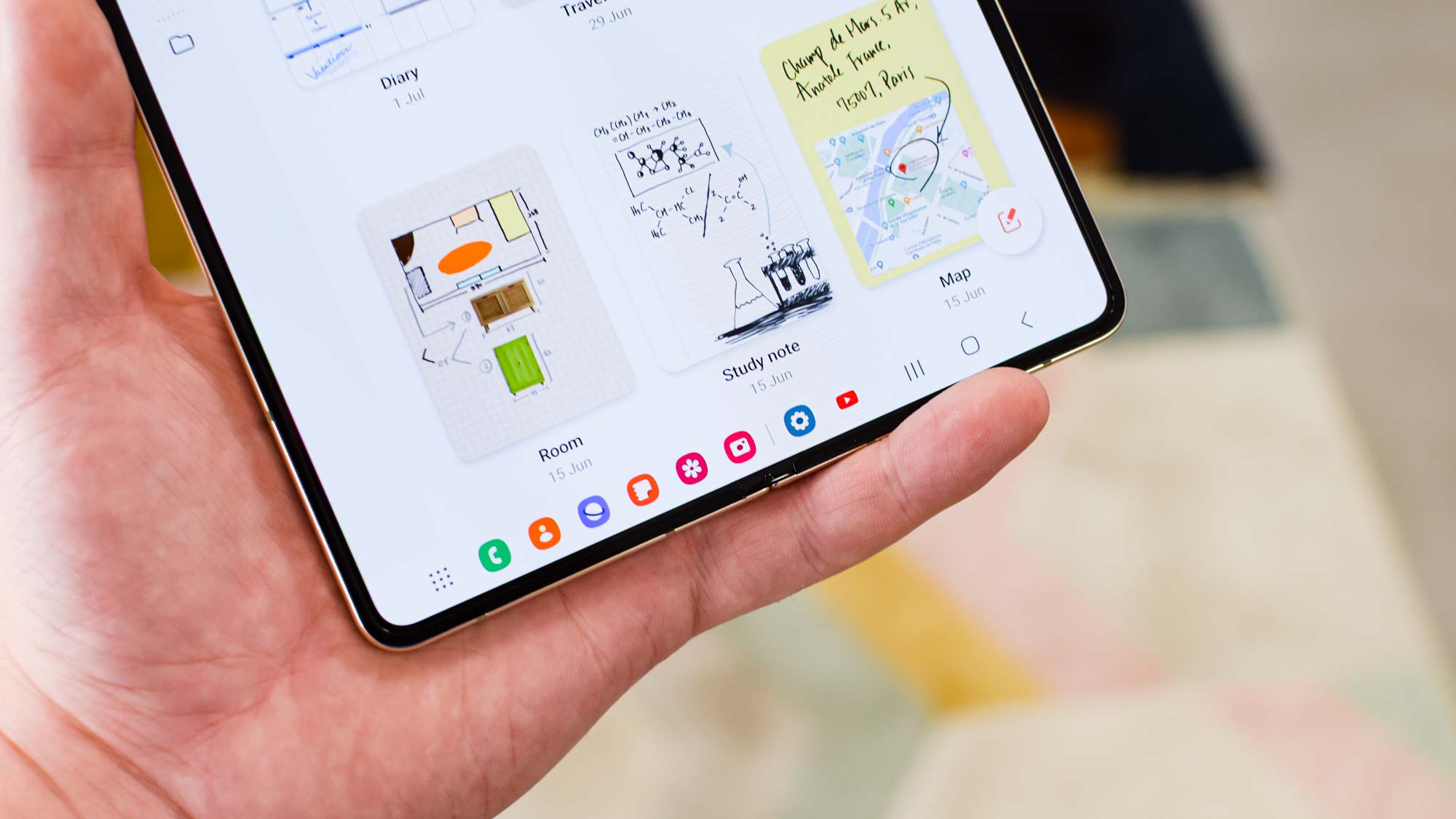
One of the biggest improvements with the Galaxy Z Fold 4 is the software, and that's thanks to the new Android 12L operating system on board. This special version of Android is designed for large-screen devices, including foldable phones.
To make multitasking easier, there's a new Taskbar that appears at the bottom of the Galaxy Z Fold 4's display that automatically shows your recent apps. And you can decide what favorites appear on the taskbar by simply re-arranging the main home row on the home screen.
Just like before, you can run up to three apps on the large 7.6-inch display at once, though I usually stick to just two. I like that I can just drag an app off the taskbar to open it and put it on the left or right side of the screen. Or you can just swipe up with two fingers when you're in an app if you want to place another app next to it (though you have to enable this gesture).
One of the benefits of being able to run apps side by side is drag and drop. So, for example, I can drag a photo from the Gallery app to an outgoing message in Gmail. In addition, Chrome now supports drag and drop functionality for things like photos and links.
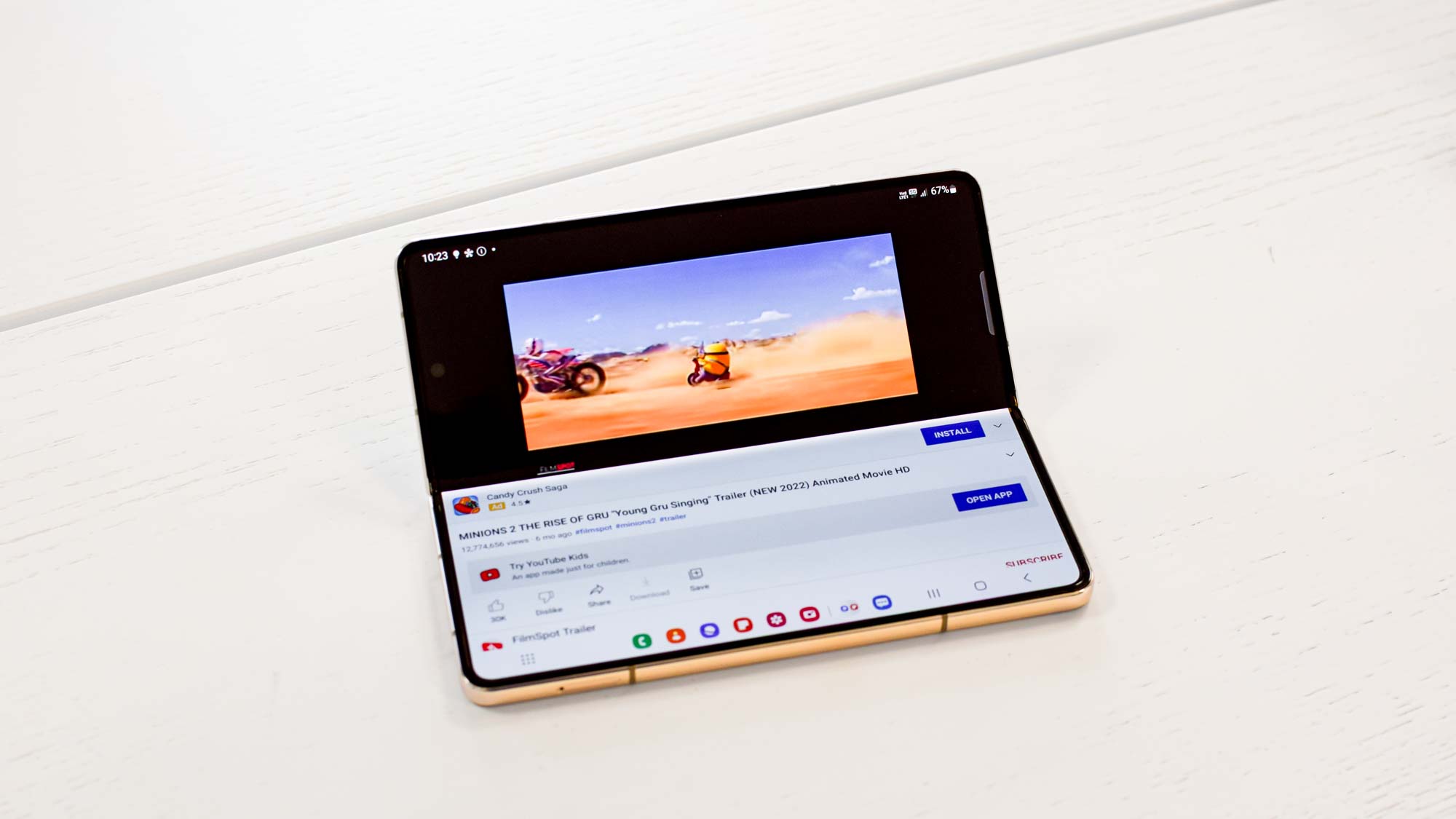
Flex mode has also improved with the Galaxy Z Fold 4, which puts the content of apps up top and controls down bottom when you fold the screen in half. Samsung is working with several developers to take better advantage of the foldable display, including Google Meet, Microsoft Teams and Zoom.
Samsung Galaxy Z Fold 4 review: Cameras
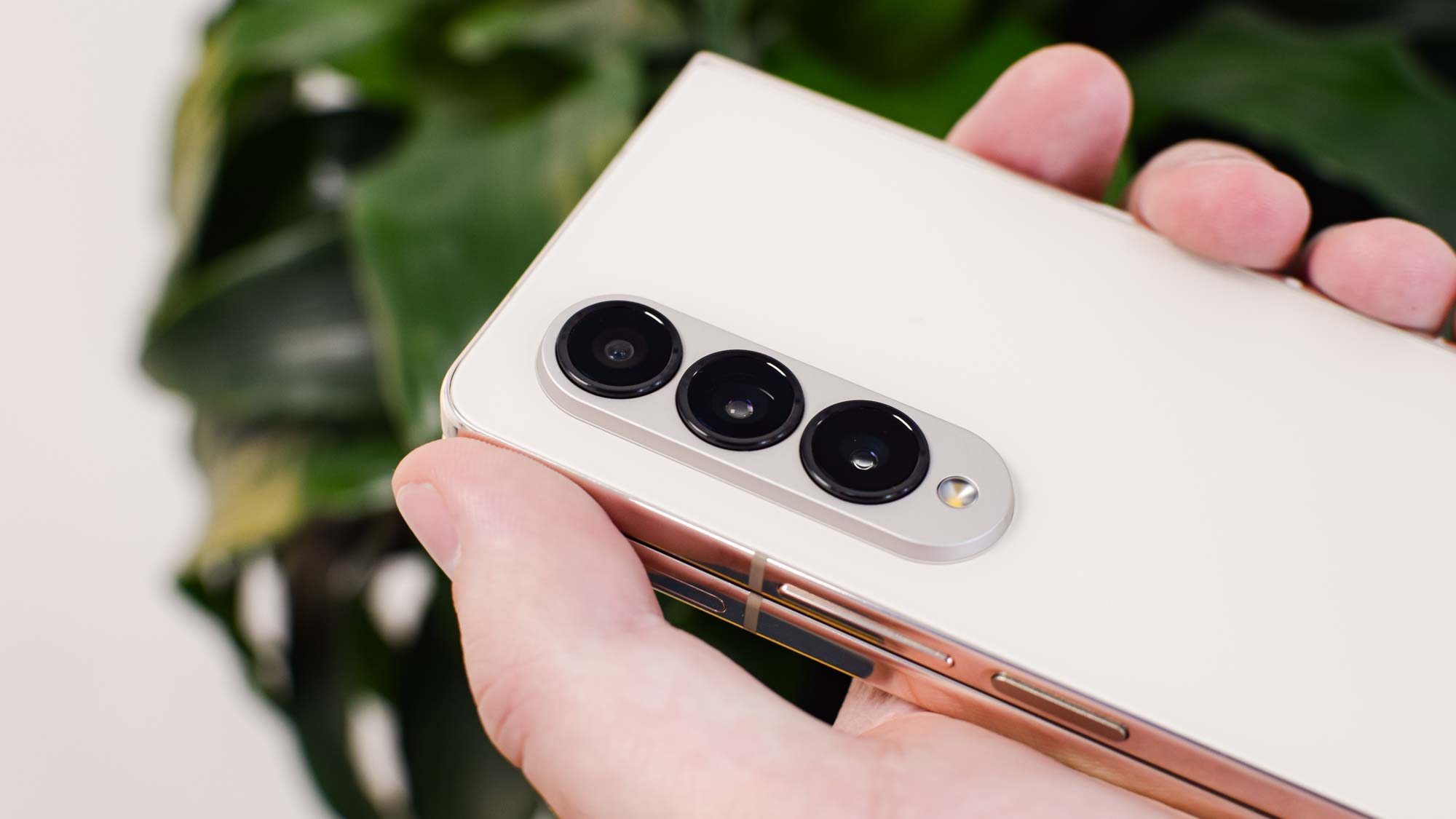
The Galaxy Z Fold series is no longer a step behind the Galaxy S series when it comes to cameras. It fixes the one thing I hate about foldables and has a camera that can compare with the likes of iPhone 13 Pro Max. In fact, the Fold 4 basically uses the same camera system as the Galaxy S22 and Galaxy S22 Plus.
It starts with a 50MP main camera with a 23% brighter sensor, which should result in better looking images indoors. You also get a 12MP ultra-wide camera and a 10MP telephoto lens with 3x optical zoom and 30x Space Zoom. The front of the phone houses a 10MP selfie camera, and the right side of the 7.6-inch display has a lowly 4MP sensor.
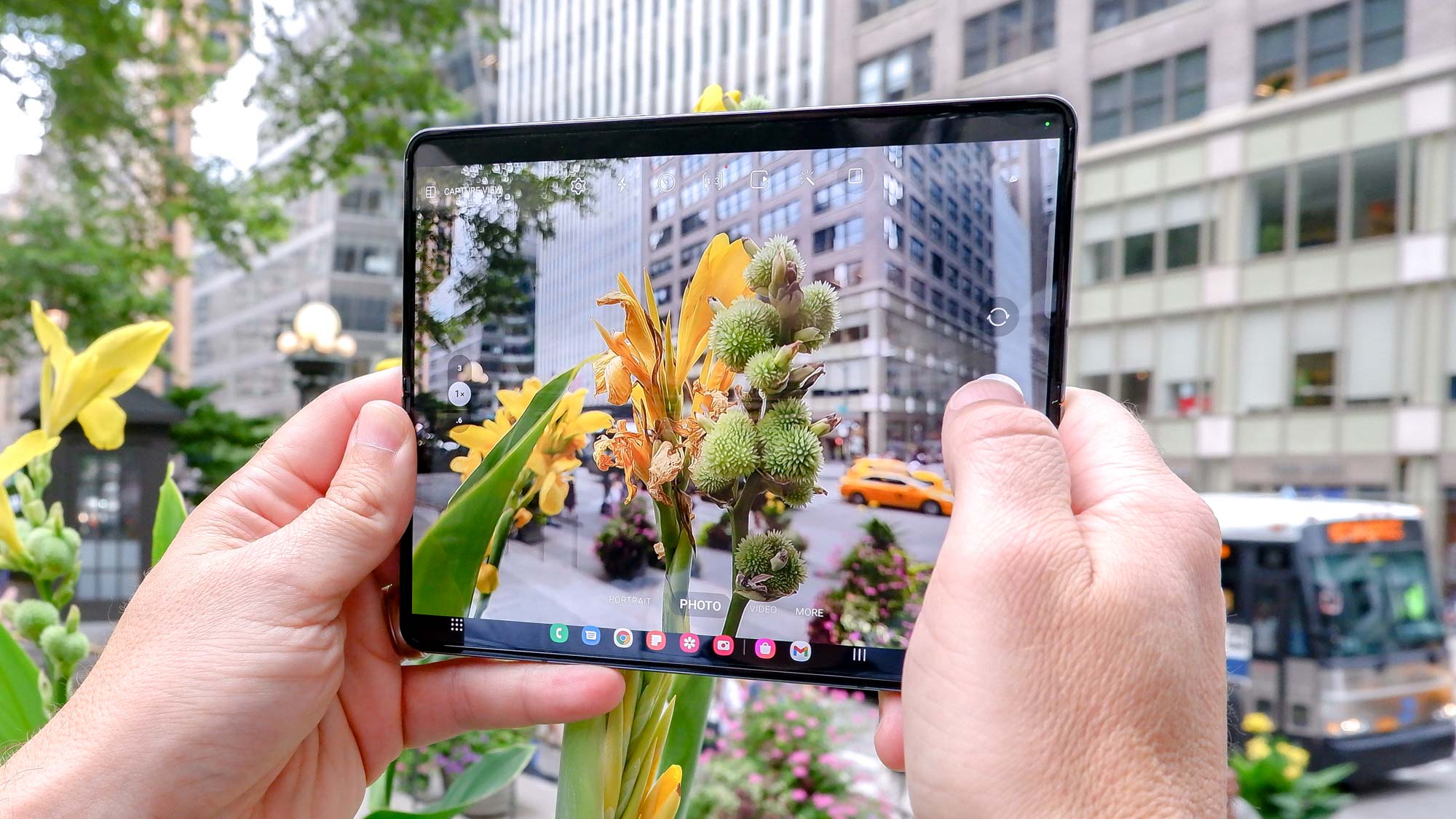
Just like the Galaxy S22, you'll be able to enjoy Nightography features for better shots in low light. And with Flex mode engaged, you can take photos hands-free, or use the Rear Cam selfie mode to use the superior back cameras for taking selfies while using the cover display to preview.
Based on our photo comparisons with the iPhone 13 Pro Max, the Galaxy Z Fold 4 definitely holds its own. And it actually outperforms Apple's camera in a couple of shots.
In this close-up of a hibiscus flower, the coloring is more natural in the Galaxy Z Fold 4 shot, while there's a more yellow tinge to the iPhone 13 Pro Max photo. But I give an edge to the iPhone here because you can make out more details in the petals and the flower stands out more versus the background.
I normally prefer iPhones for portrait photos but in this case I give the nod to the Galaxy Z Fold 4. My face looks brighter without being washed out. The iPhone 13 Pro Max pic looks warm but a little flat by comparison.
Here's another victory for the Galaxy Z Fold 4. In this shot of a statue Samsung's camera brings out more details in the shadows, especially as you look towards the top of the structure. And the statue itself stands out a bit more.
In this ultra-wide photo, the Galaxy Z Fold 4's photo is a bit more pleasing owing to the greener looking grass (even if it's not that realistic), and there's a bit less curving around the extreme edges of the shot. The reflections coming off the glass buildings of the surrounding clouds also looks better through the Samsung.
Feeling hungry? This fruit tart shot looks pretty delicious through both the Z Fold 4 and iPhone 13 Pro Max. I give an edge to the iPhone for nailing the details in the blackberries, while the focus is a bit softer through the Samsung.
The Galaxy Z Fold 4 produces a slightly worse image of this fountain in Bryant Park, as there's a slightly hazy film over the shot, especially towards the top of the frame. The water also looks crisper through the iPhone 13 Pro Max.
With night mode engaged on both phones, the Galaxy Z Fold 4 manages a brighter overall shot with this coffee mug. However, the blue in the mug looks a bit richer in the iPhone shot.
The Galaxy Z Fold 4 starts to pull ahead when we start comparing zoom performance. Its shot looks warmer and more detailed compared to the iPhone, which comes out a bit fuzzy.
The Galaxy Z Fold 4 maxes out at 30x Space Zoom, compared to 15x for the iPhone 13 Pro Max, so you can see how much further you can go if you really want to get in close. The "GWR" letters are certainly visible but there's some noise in the Samsung pic at this high level.


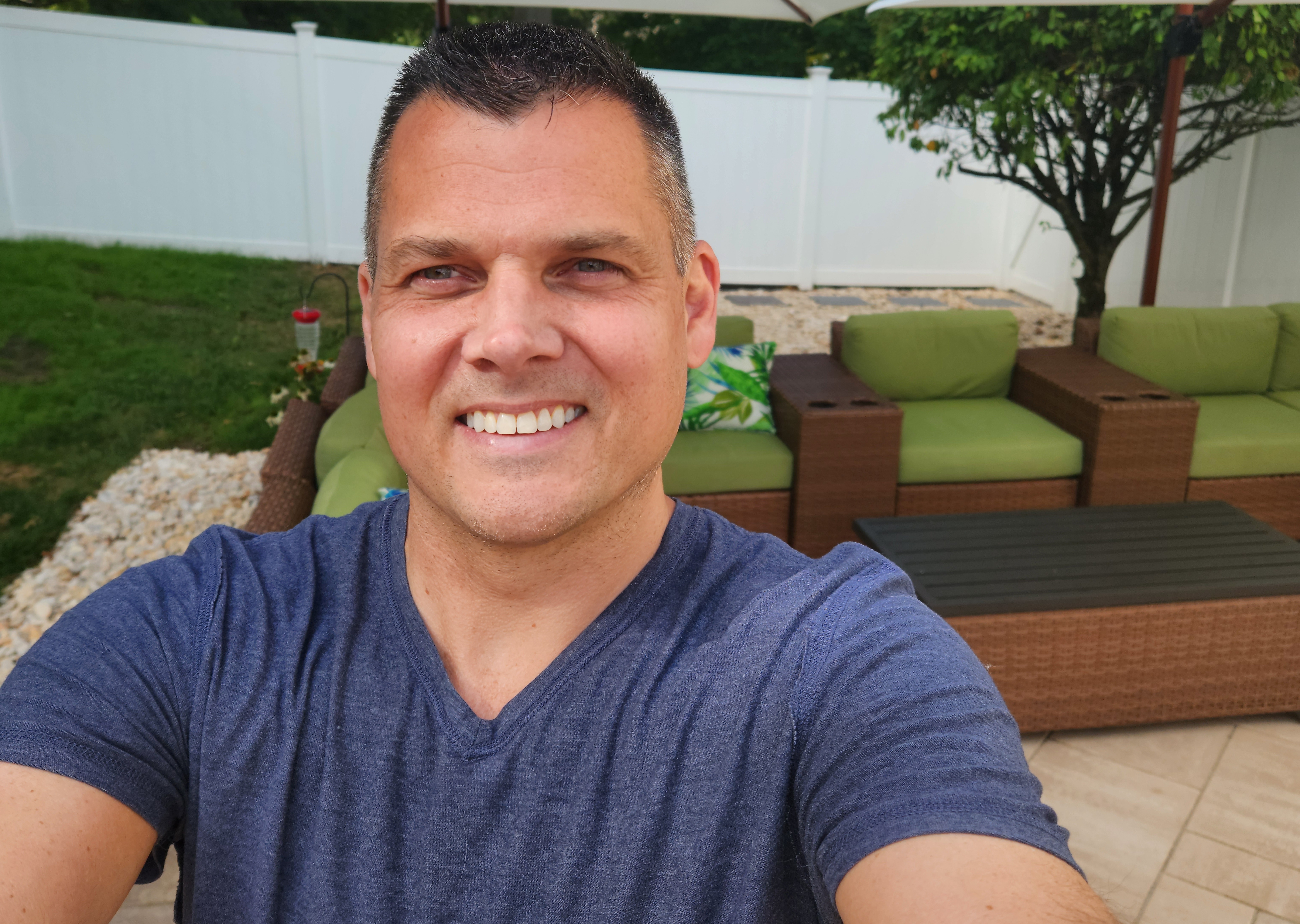
The Galaxy Z Fold 4 gives you three ways to snap a selfie, and one of them I would not recommend. As you'll see in the above gallery, the Z Fold 4's front 10MP cover camera does a very good job capturing the detail in blue shirt and even the pillows in the background.
However, the under-display camera captures a fuzzier image, owing to its lowly 4MP resolution. And my skin looks artificially brightened. It's clear Samsung has tried to make some improvements but this camera would never be my first choice.
If you want the best possible results — and a wider field of view — you can engage rear camera selfie mode. You just go to take a selfie with the cover closed and press a button in the top left corner, then flip open the display to use the rear 50MP camera. You'll also enjoy a wider field of view, and the result looks quite good.
So what about the 50MP main camera? Is the extra resolution worth it? Yes, if you plan on cropping in. As you'll see in this photo of a fire pit, the 50MP shot is a bit brighter, but it's hard to tell much of a difference. In fact, I kind of prefer the 12MP image because the cushions are a deeper green.
As we crop in much closer, you can see the benefit of the 50MP sensor. The wicker chairs look a bit fuzzier on the 12MP shot, and there's more noise in the shadows. So having the 50MP option is settings is nice. Just remember that you can't zoom in while taking the shot in this mode.
Samsung Galaxy Z Fold 4 review: Performance
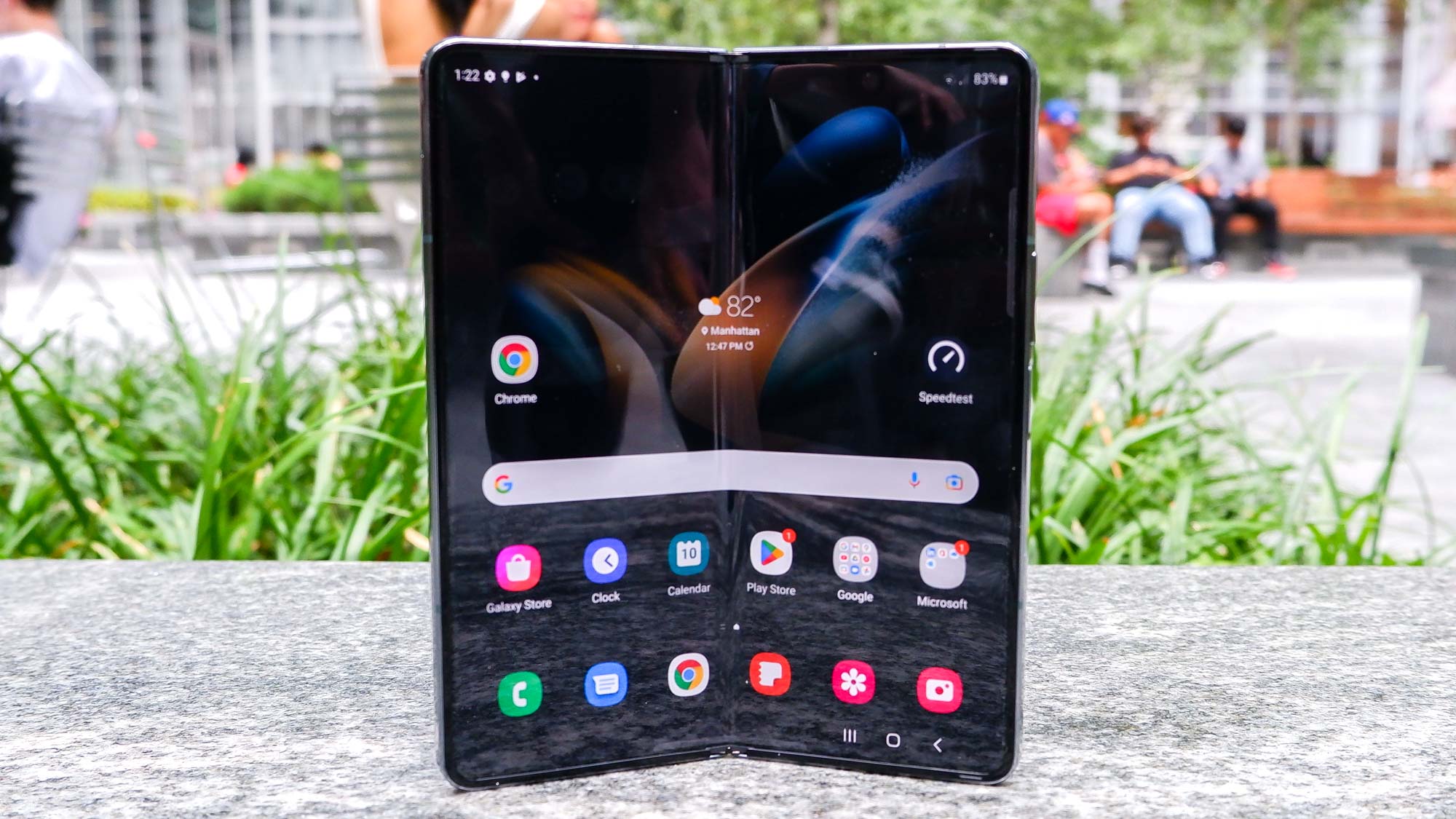
The Galaxy Z Fold 4 is powered by the new Snapdragon 8 Plus Gen 1 chip along with 12GB of RAM. The default storage is 256GB, but you can upgrade to 512GB or now 1TB.
During my testing so far, the Galaxy Z Fold 4 has proved snappy and responsive, but I've experienced a couple of instances where an app stopped responding when running two apps side by side. This happened when dragging and dropping photos from the Gallery app to Google Drive.
Gaming performance has been strong. I enjoyed turbo boosting and performing 360-degree turns in the Asphalt 7 racing game, and having a large display helped me appreciate finer details like splashes of water hit my car.
On Geekbench, which measures overall performance, the Galaxy Z Fold 4 scored 1,328 on the single-core test and 3,831 on multi-core. That's higher than the Galaxy S22 Ultra (1,240/3,392) but behind the iPhone 13 Pro Max (1,720/4,549).
Turning to graphics, the Galaxy Z Fold 4 notched 52.83 frames per second on the 3DMark Wild Life Unlimited benchmark. That's actually a bit less than the S22 Ultra (56.87 fps) and once again the iPhone 13 Pro Max came out on top (68.37 fps).
Last but not least, the Galaxy Z Fold 4 transcoding a 4K video to 1080p just a hair faster than the Galaxy S22 Ultra using the Adobe Premiere Rush app (45 seconds vs 47 seconds). The iPhone 13 Pro Max needed just 25.1 seconds.
Samsung Galaxy Z Fold 4 review: Battery life and charging
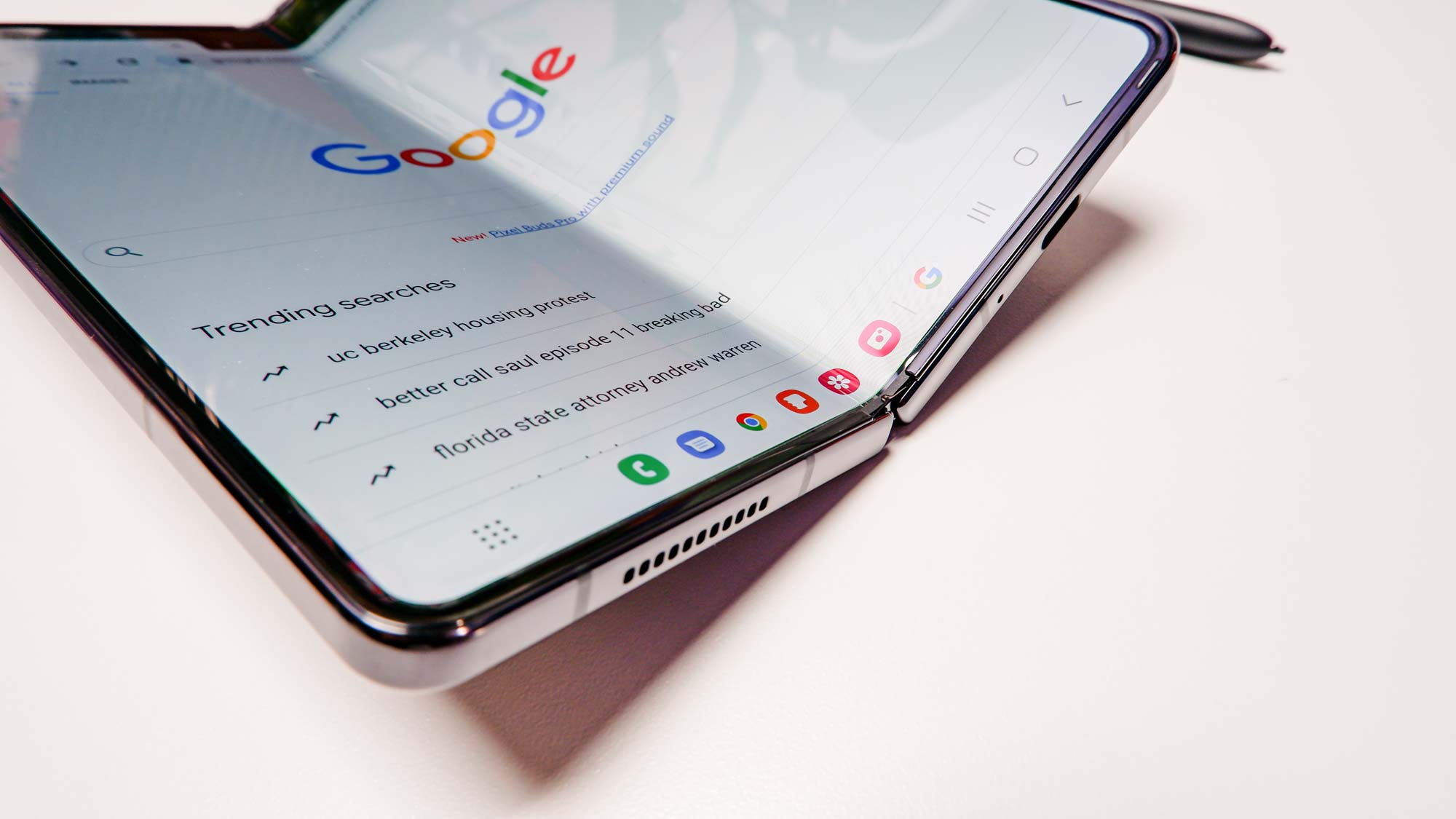
This is one of the things that had me nervous about the Galaxy Z Fold 4. It has the same battery capacity of 4,400 mAh as the Galaxy Z Fold 3. I worried because the Galaxy Z Fold 3 lasted just 7 hours and 52 seconds in 60Hz display mode and 6:34 on adaptive mode on our web surfing test.
The good news is that the Galaxy Z Fold 4 lasted longer on a charge in our testing, but the results were not consistent. In standard mode (60Hz) we saw an average of 9 hours and 28 minutes. With adaptive mode on, that average came down to 8 hours and 19 minutes. Neither of these times is good enough to make our best phone battery life list, but it's an improvement.
The Galaxy Z Fold 4 supports fast charging that should get you to 50% in 30 minutes, and this foldable also offers fast wireless charging and Wireless PowerShare for juicing up your Galaxy Buds Pro 2 or Galaxy Watch 5 using the back of the phone.
Samsung Galaxy Z Fold 4 review: S Pen support
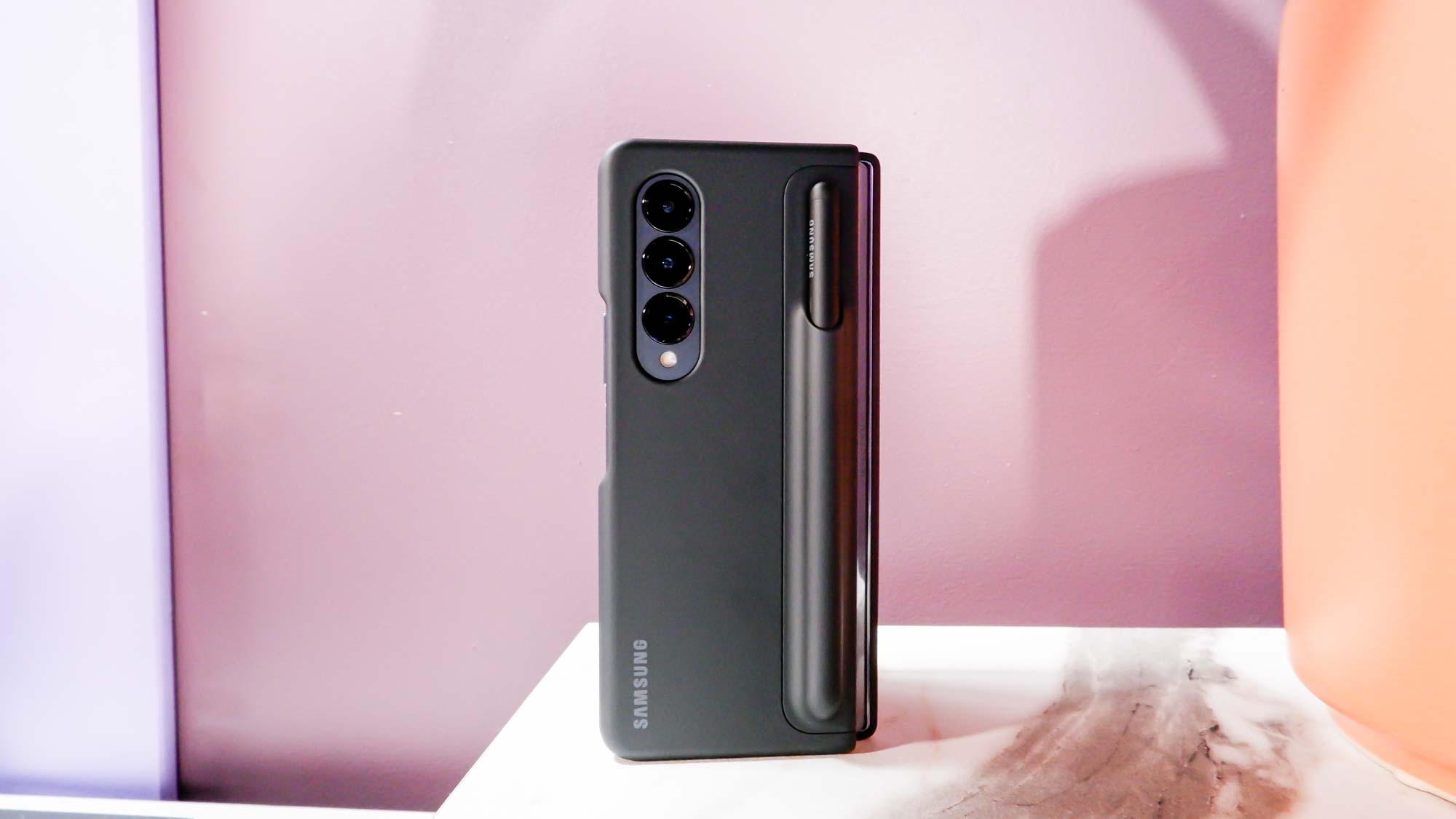
The Galaxy Z Fold 4 supports S Pen input, but there's no built-in holster for the pen. Instead, you'll have to spring for a separate case if you want to secure the stylus while you're on the go. With the S Pen you can take notes and draw on the go, but we're not sure how many people will want to pay extra for this perk.
Samsung Galaxy Z Fold 4 review: Verdict
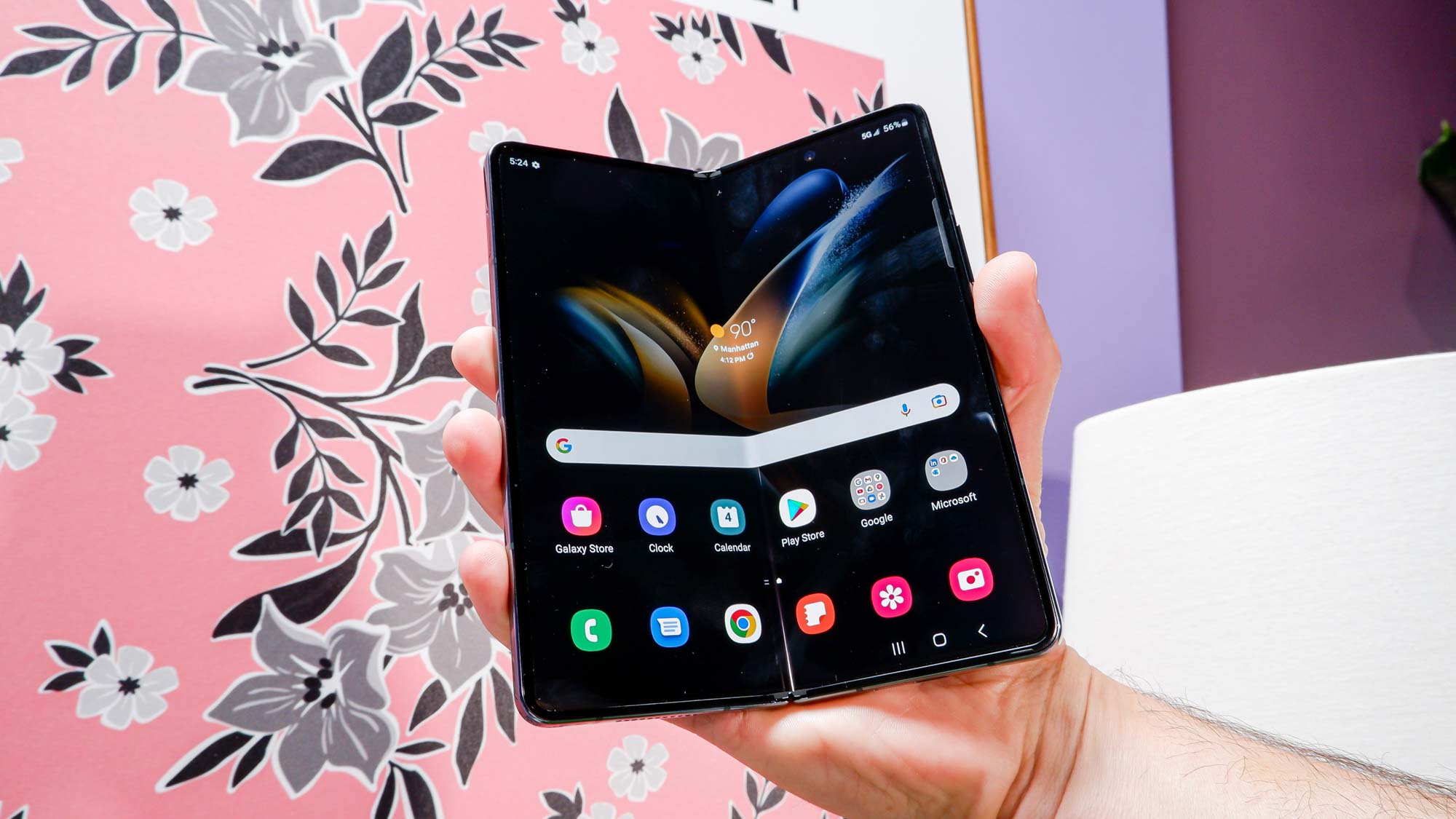
The Samsung Galaxy Z Fold 4 is a fine evolution of the best foldable phone. And there are times I can see myself ditching my current smartphone for this beast. It can multitask like no other phone, and I can simply get more done in less time on the latest Fold versus my iPhone.
Samsung deserves credit (along with Google) for evolving the software experience with things like the taskbar, better drag and drop support and more optimized apps for Flex mode and larger screens in general. The camera system is especially good this time around the Galaxy Z Fold 4.
However, the $1,799 price remains a huge hurdle for adoption, and while the design has improved this is still the largest and heaviest phone around. So you'll have to be willing to deal with these two trade-offs if you want to join the foldable revolution and get PC-like power in your pocket.
Next time around I'd like to see Samsung experiment with a more radical redesign, such as maybe getting rid of the front screen altogether for an even slimmer body, but for now this is the best foldable phone around.
Next: You can check out our guide to the best Samsung Galaxy Z Fold 4 cases if you're planning to get the Galaxy Z Fold 4 foldable. And if you just got one, here are 9 features you need to set up first on your Samsung Galaxy Z Fold 4. Here's why the Galaxy Z Fold 4 falls flat as a gaming phone. You can also read how I ditched my iPad for a Samsung Galaxy Z Fold 4 — and it was better than I thought.
Mark Spoonauer is the global editor in chief of Tom's Guide and has covered technology for over 20 years. In addition to overseeing the direction of Tom's Guide, Mark specializes in covering all things mobile, having reviewed dozens of smartphones and other gadgets. He has spoken at key industry events and appears regularly on TV to discuss the latest trends, including Cheddar, Fox Business and other outlets. Mark was previously editor in chief of Laptop Mag, and his work has appeared in Wired, Popular Science and Inc. Follow him on Twitter at @mspoonauer.
-
Apple Jackson Dude, if you're NOT using an s-pen with this phone, I honestly don't know why you'd even want it. I had it for a day before my s-pen arrived (turns out the device wont even let you use one from an old Note or current Galaxy Tablet for fear of screen damge) and the whole experience felt... broken, would be the best word I can use to describe it. I mean, it just feels clunky and awkward using fat fingers to navigate and perform actions, whereas using the pen couldn't feel more natural. Plus, I mainly switched from the Note (Ultra, now) series due to how much I use my phones for sketching and blueprinting. It's nice to not have that waterfall edge they inexplicably added to the Note series too. It's a pointless and counterintuitive design choice for a device intended to be used with a stylus. Additionally, the pressure sensitivity actually seems even better than on my S8+, but that may be due to the glass screen protector and anti-reflective film on the tablet. I wish the pen was usable on the outside display though. It's weird that it doesn't work there, especially since the precision would be welcome on the compact display.Reply -
ReynoldsK If you use wireless Android Auto, and listen to music in the car, warning!Reply
My wife and I recently purchased the (very expensive) Flip 4 and Fold 4. Both of us keep our phones up to date. What we have discovered is that these phones CANNOT properly play music (Spotify or Pandora) through Wireless Android Auto. We have tested both of these phones in 3 different cars (2 BMWs and 1 Mercedes), and in ALL cases, songs skip like a bad 80s CD player between 1 to dozens of times per song.
Unfortunately, we discovered this too late, and thought, reasonably, that this could not be the fault of these flagship level phones from such a huge brand.
It's the phones. This never happened with our previous OnePlus phones.
We have tried so many things suggested in forums, including:
Re-pairing the phone to the cars
Setting unrestricted battery management on all programs involved, including Spotify, Pandora, Android Auto, and Bluetooth
Having the cars checked with local dealers for any issues with the head units
Rebooting the phones
Having described all of this to Samsung chat support, the final suggestion was to upgrade to a different, also expensive Samsung phone.
Bottom line: If you're going to buy either of these phones, and if you use Wireless Android Auto with music in the car, TEST THIS IMMEDIATELY AFTER PURCHASE, so you'll have time to return the phone for something else. -
batfung I just want to say I have had some very bad experience with the Fold4 lately. I have the phone for about 14 months and its folding screen has already broken. At first, about a month ago, the protector started to come off, after a couple of weeks or so the screen of the folding area stopped showing anything and stopped responding to any touch.Reply
According to the product page on my Samsung account I have a 'confirmed' warranty till 30 Oct 2023. When I brought my phone to the service centre on the 21 Oct, they said my phone is out of warranty because the invoice date is 18 Aug 2022. Something for you guys to watch out for. Don't trust the warranty date on the product page on your Samsung account!!!
Now that the centre considered my phone is out of warranty, they would charge me $750 to have the screen repaired!! The service centre said I could call Samsung Customer Centre to appeal and hopefully could get a free repair. But do I want to wait in line for hours for a service call, and to have the screen repaired for what would last for just another year? I am not so sure about the answer to that question.
